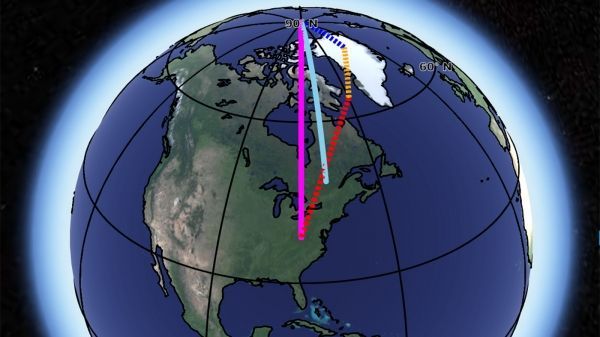Earth is not a perfect sphere. When it rotates on its spin axis -- an imaginary line that passes through the North and South Poles -- it drifts and wobbles. These spin-axis movements are scientifically referred to as "polar motion." Measurements for the 20th century show that the spin axis drifted about 4 inches (10 centimeters) per year. Over the course of a century, that becomes more than 11 yards (10 meters).
Using observational and model-based data spanning the entire 20th century, NASA scientists have for the first time identified three broadly-categorized processes responsible for this drift -- contemporary mass loss primarily in Greenland, glacial rebound, and mantle convection.
"The traditional explanation is that one process, glacial rebound, is responsible for this motion of Earth's spin axis. But recently, many researchers have speculated that other processes could have potentially large effects on it as well," said first author Surendra Adhikari of NASA's Jet Propulsion Laboratory in Pasadena, California. "We assembled models for a suite of processes that are thought to be important for driving the motion of the spin axis. We identified not one but three sets of processes that are crucial -- and melting of the global cryosphere (especially Greenland) over the course of the 20th century is one of them."
Continue reading at NASA Jet Propulsion Laboratory
Image via NASA Jet Propulsion Laboratory


